Archives of Loren Williams Fly Tying Tutorials.
LW's Dark Quill Sulphur
Fly and Photos by Loren Williams
The "Sulphurs" are typically represented with the three Ephemerella species invaria, rotunda, and dorothea. E. invaria is the largest at #12-#14 and hatches first, followed by E. rotunda (#14-#16), and E. dorothea (#16-#18). While the duns and spinners of these species are all relatively similar in appearance, the nymphs are not. While attending Penn State, the owner of the local fly shop, Steve Sywensky, made me aware that the two larger, earlier species have a decidedly darker nymph than the smaller, latter species.
The nymphs do have some commonalities in that they have heavily speckled, prominent legs, and short speckled tails. Overall the nymphs will appear quite mottled, and as they reach maturity their thoraxes will broaden and their wing cases will darken. Most streams that have sulphurs have strong populations of at least some of the species. During hatch time the nymphs are often the top menu item. It is at this time, if ever, that more specific imitations-beyond Pheasant Tails and Hare's Ears will be required.
There are multitudes of dubbed sulphur nymphs which can be deadly if tied judiciously. However, too many folks over-dub their patterns creating inaccurate profiles and flies that do not sink properly. I also see too many dubbing blends that are monotone. Nothing in nature is a single color! I have found that quill bodied nymphs are easier for most folks to tie in a slim fashion, sink well, and very accurately imitate the mottled appearance of most mayfly nymphs.
What follows is the dark sulphur nymph I'll turn to if my more generic patterns fail. I've also completed a tutorial of the dorothea nymph I'd use, the LW's Light Quill Sulphur Nymph.
MATERIALS
Hook: Mustad 3906B or 3399 (#12-#14)
Weight: .015 or .010 lead wire (optional)
Thread: Brown
Tails: Brown Hungarian Partridge
Rib: Fine Copper Wire
Abdomen: Wild Turkey Tail Quill
Wing Case: Black Dyed Quill (Goose or Turkey)
Thorax: Red Fox Squirrel (from the back)
Legs: Brown Hungarian Partridge
Click photos to enlarge!
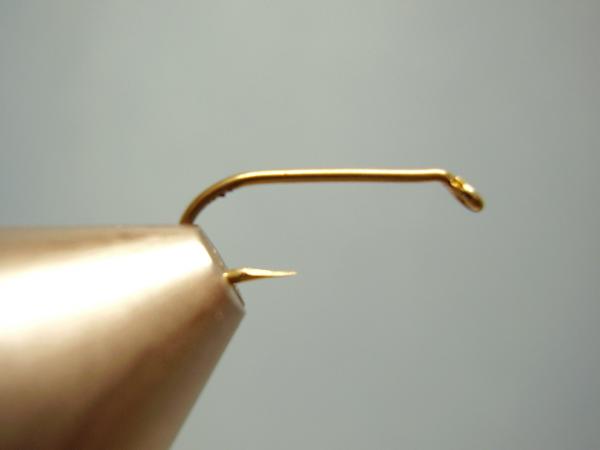
Place the barbless hook securely in your vise.

Wrap the middle 2/3 of the shank with lead wire. Break the wire ends and slide the wire toward the thorax.
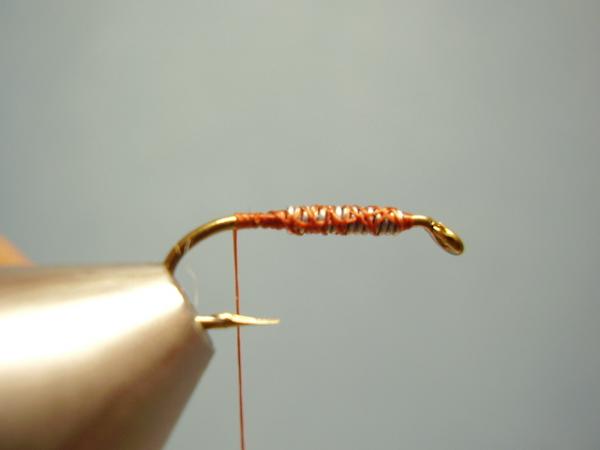
Secure the wire with thread and taper the ends. This will also act to keep the wire in place. Advance the thread to the rear leaving it just above the barb location.
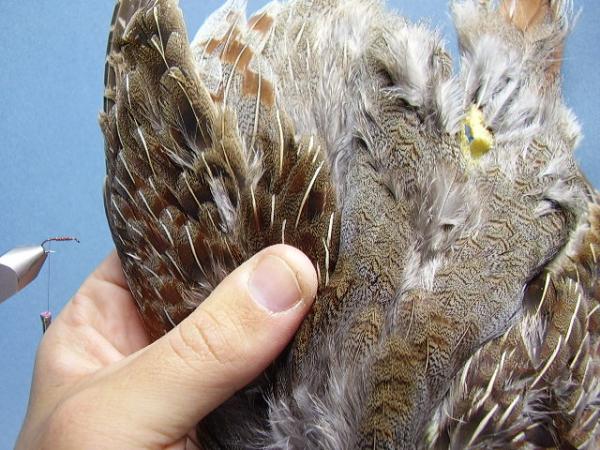
From a quality Hungarian Partridge skin, select a well-marked covert feather from the rear of one of the wings (by my thumb in the photo).
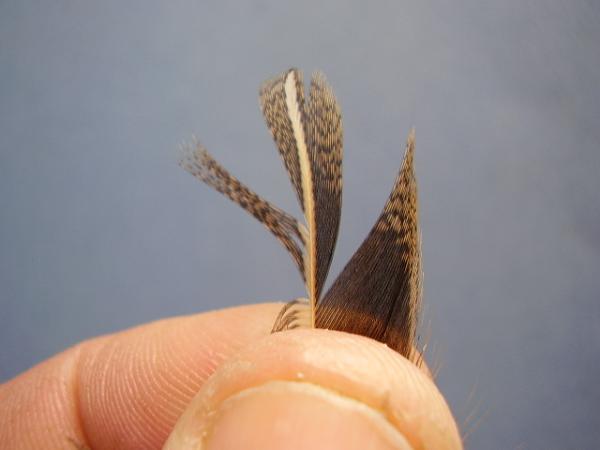
Separate a few barbs. Make sure you even the tips.
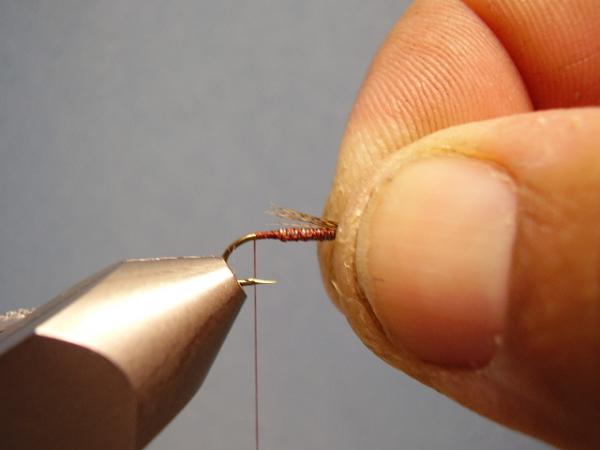
Clip off the tips and measure them to be equal to about 1/2 to 2/3 of the hook shank.
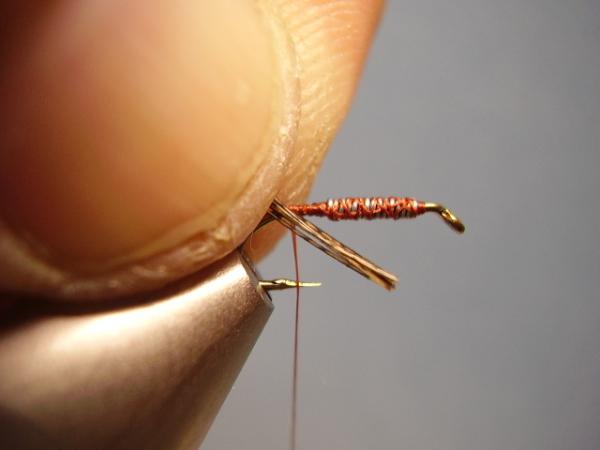
Switch hands and place the measured point directly on top of the thread, which should be hanging just above the barb location.
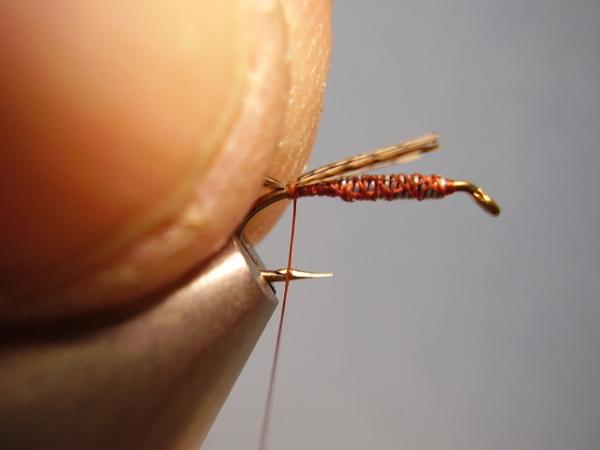
Allow the thread pressure to roll the fibers on top of the hook where you will lock them down with a few tight wraps.

Bind the excess to the rear edge of the wire-this will help build the abdominal taper.
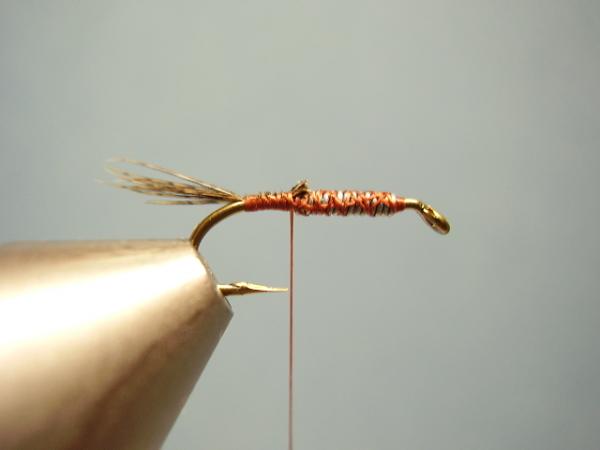
Clip the excess.

Select a wild turkey tail feather.

Clip out a narrow slip of quills-perhaps 3 fibers wide.
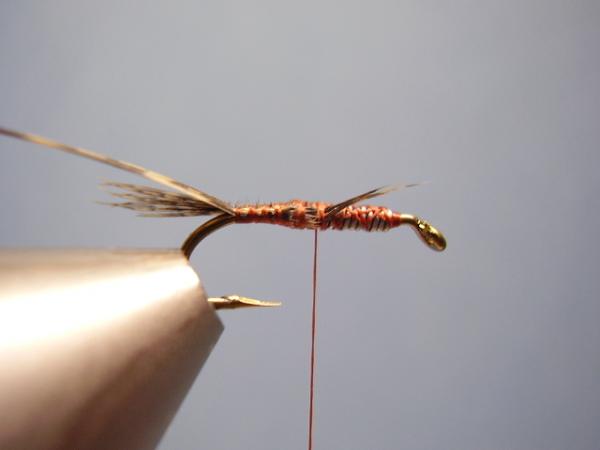
Tie the slip in, by the tips, at the rear edge of the wire and secure it to the rear. Advance the thread back to the middle of the shank.
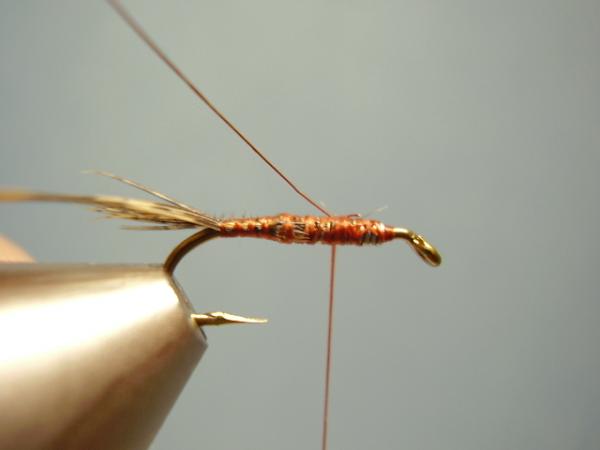
Catch-in a section of fine copper wire for the ribbing.
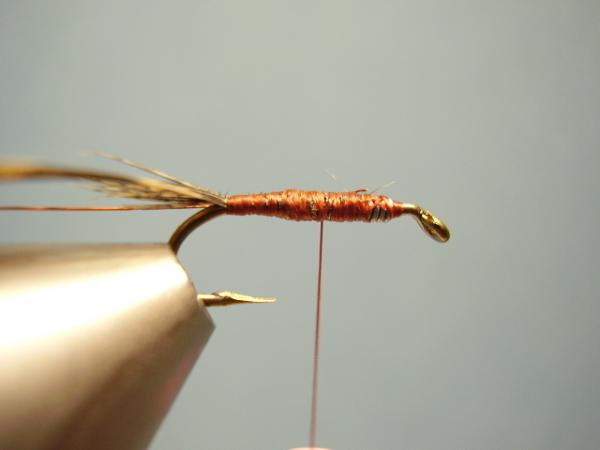
Secure it to the rear on the far side of the hook shank. Return the thread to the middle of the shank.
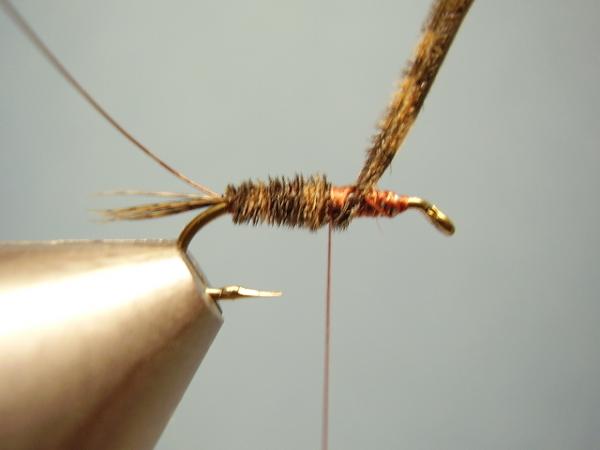
Wrap the quill slip forward to the middle of the shank and tie it off.

Reverse-wrap the copper wire (wrap in the opposing direction as the quill). I like to make the first wrap under the tail, but it needs to be tight or it will slide off the rear with use. Secure it at the middle and clip the excess.
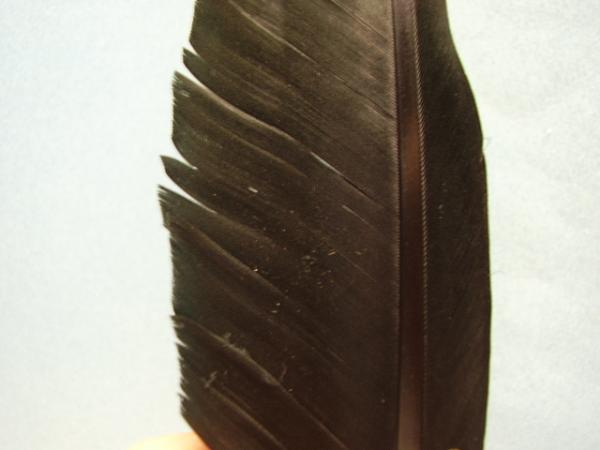
Select a dyed black quill. Shown is goose.

Poke your scissors through and snip away a section of quill equal to the hook's gape.
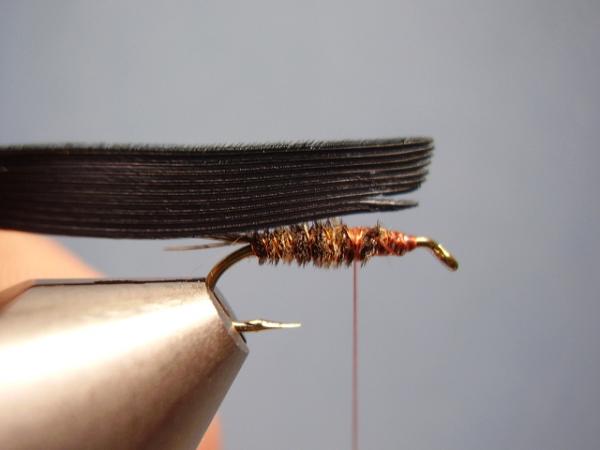
Orient the tips to the front.
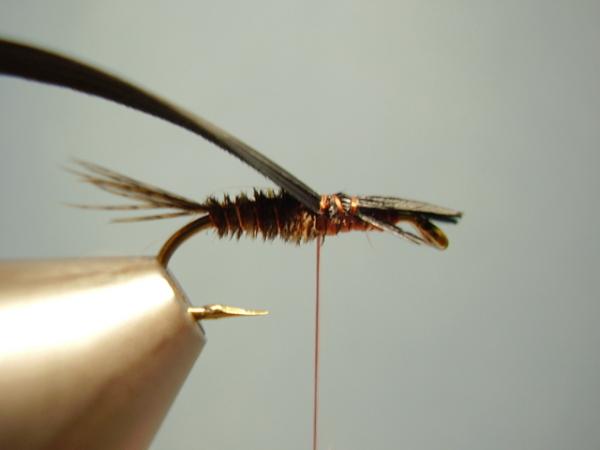
With the underside (shiny side) facing up, secure the quill slip at the middle of the shank. Be accurate with your placement of the wing case or you will throw off the proportions of the fly.
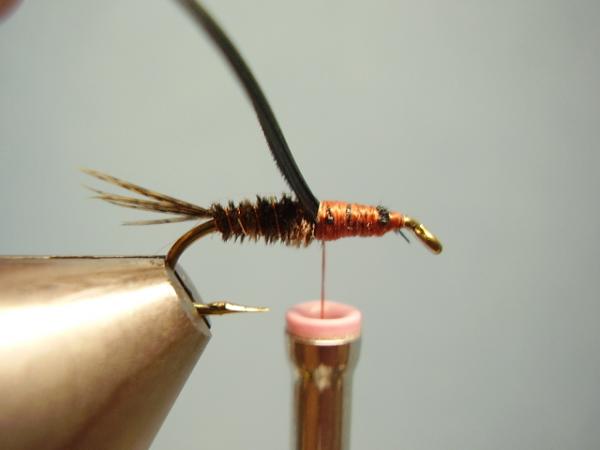
Clip the excess and taper the thorax with thread. Please, only enough wraps to do the job!
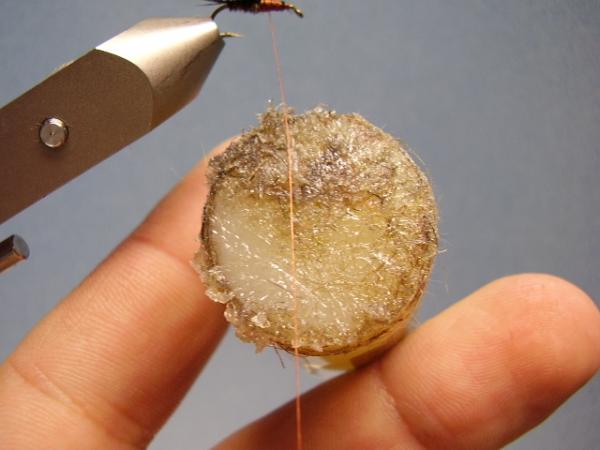
Apply a few strokes of tacky dubbing wax to your thread..about 3-inches of thread will suffice.
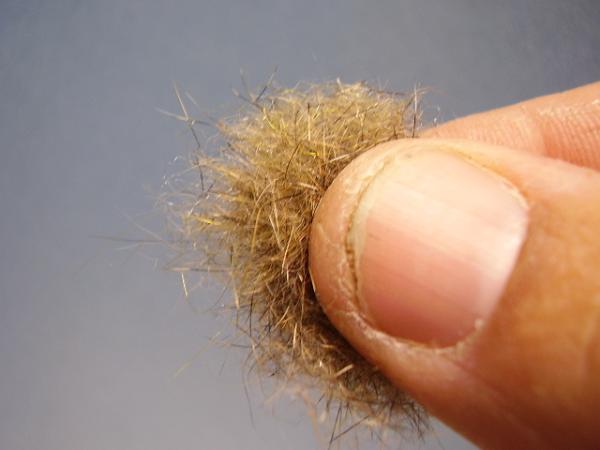
Select a pinch of Red Fox Squirrel Dubbing. Shown is a commercial blend using antron in the blend. I use this as well as my own blend sans antron with equal success.
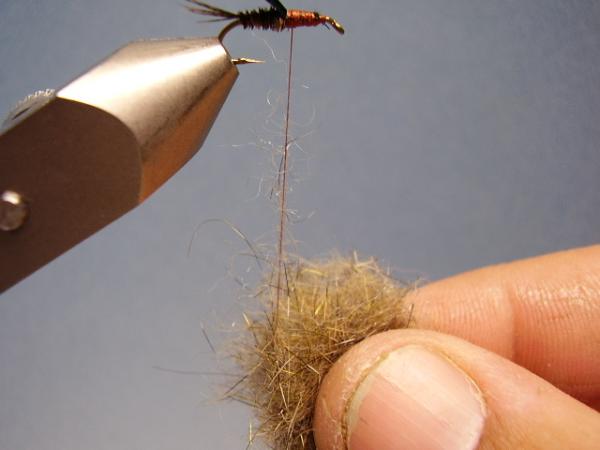
Dab the dubbing to the thread so that the loose fibers adhere to the wax. Resist temptation of pile the stuff on. The dubbing wax will catch just the right amount so trust it!
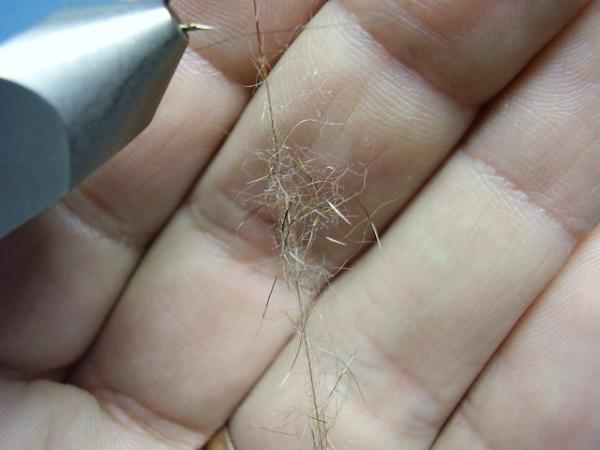
This is called "touch-dubbing" and I now use it on about 98% of my nymphs to get a shaggy and alive-yet thin-appearance.
Here is what you will end up with-or something very close.
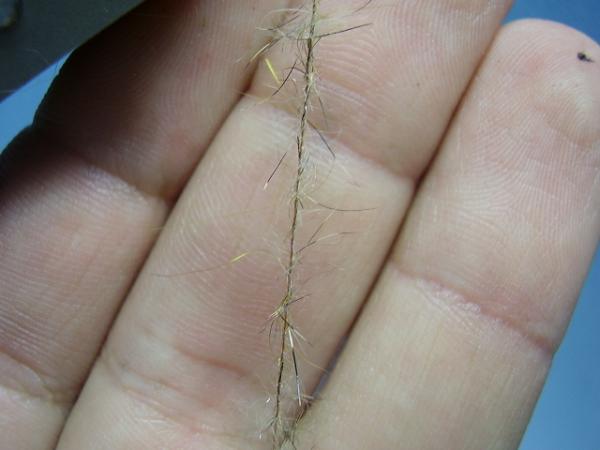
Give your bobbin a good clockwise spin to distribute and lock-in the touch-dubbed fibers.
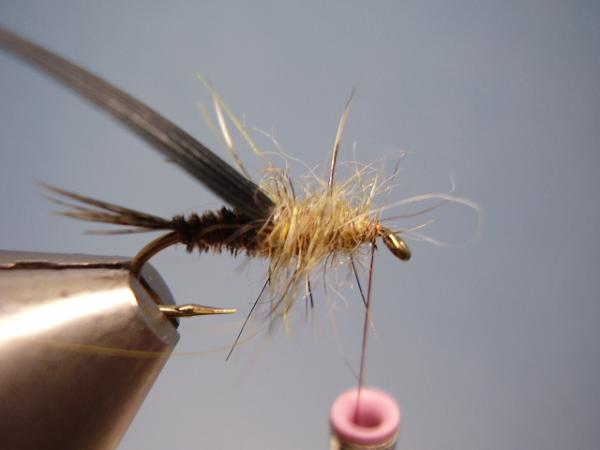
Wrap the dubbing to form a spiky thorax.
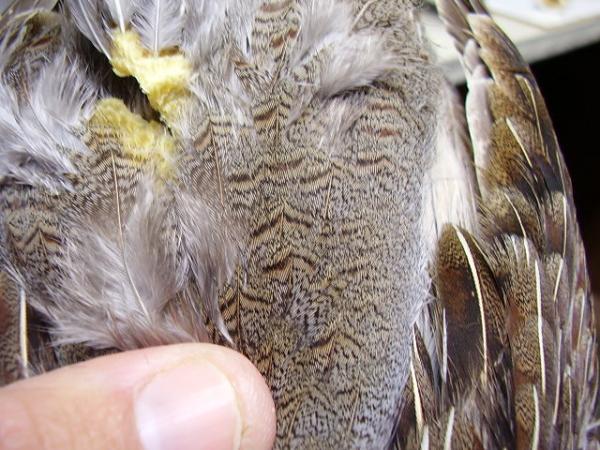
From the Hungarian Partridge skin, locate the brown speckled feathers form the back-closer to the tail.
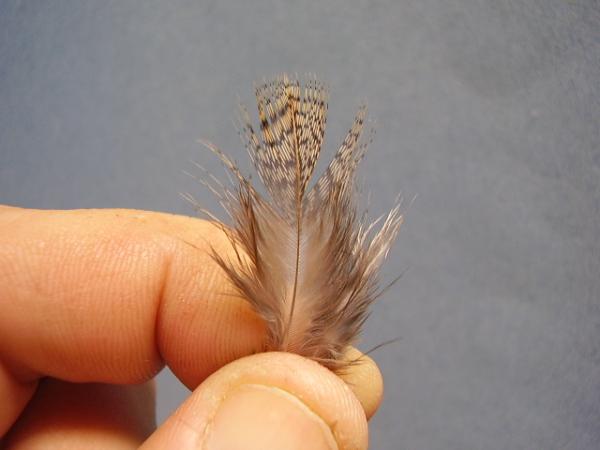
Select one with nice clean tips.
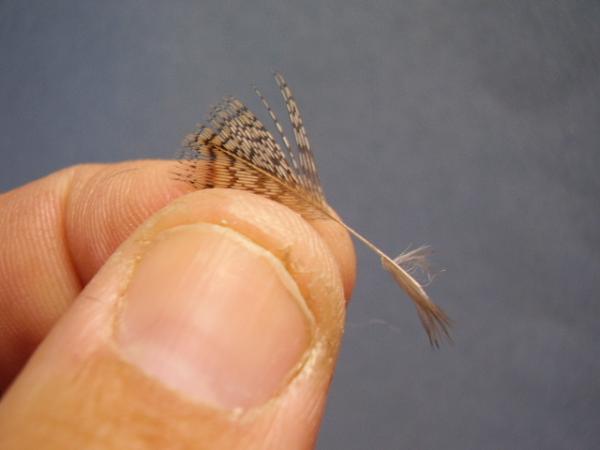
Remove the fuzz, be careful not to break off too much of the stem.
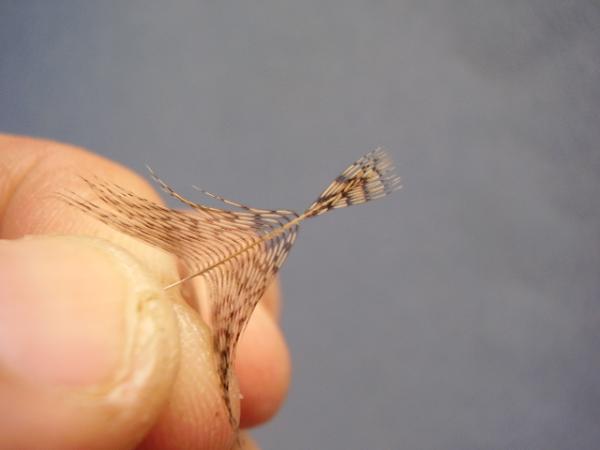
Stroke the remaining fibers down to expose the tip.

Clip-off the tip.

Stroke the remaining fibers back into place--the result will be a "V." My apologies for not photographing that step.
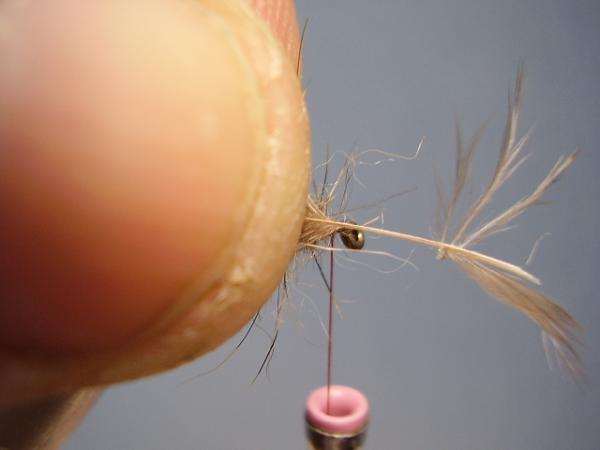
Place the feather on top of the thorax with the good side up. Press down with your thumb to hold it in place.
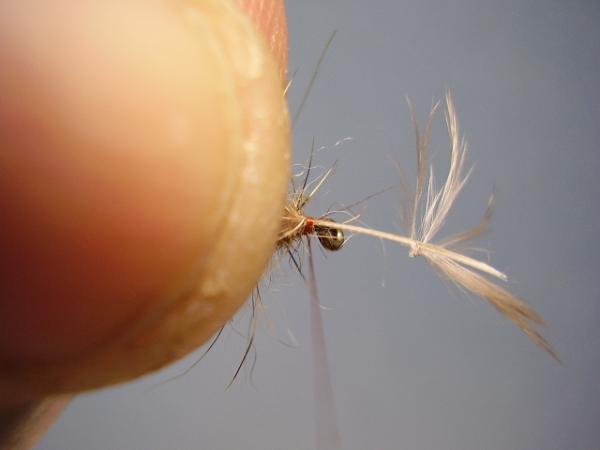
Make two wraps of thread around the stem.

Now, pull the stem forward, drawing the fibers together over the thorax. Stop pulling when the fibers are just to the rear of the middle of the shank. Take a few more wraps to secure the location and then clip the excess stem.
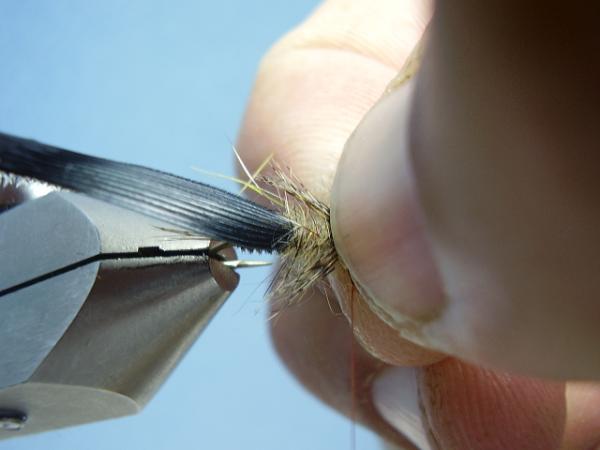
With your thumbnail and forefinger, pinch down on the thread wraps and wiggle your thumb a bit to encourage the fibers to divide at the "V" you created.
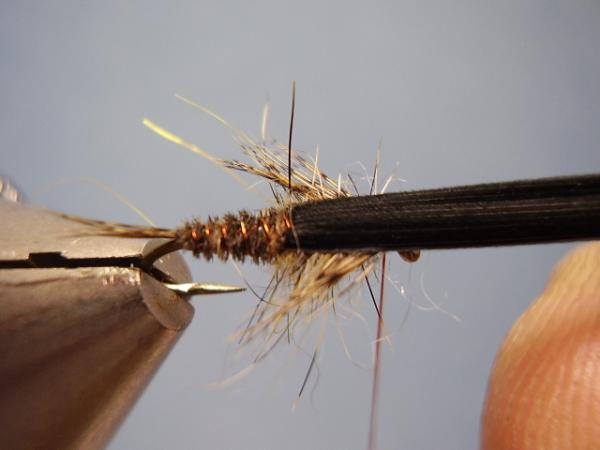
Pull the wing case forward between the fibers.
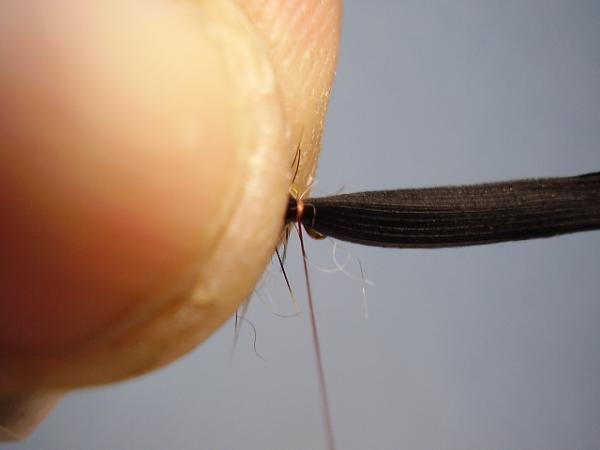
Press it down flat with your thumb as you take 2 wraps of thread to secure it.
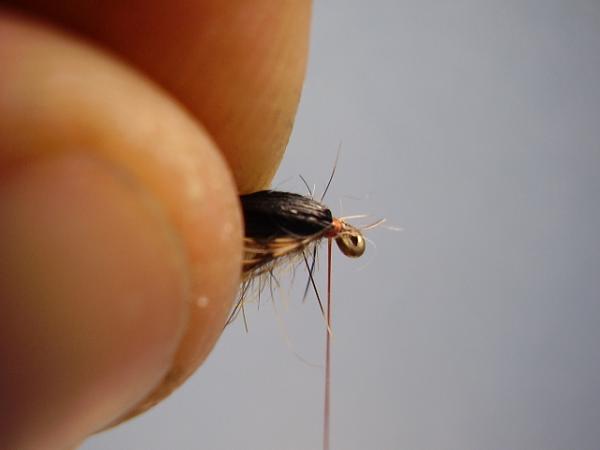
Pull the slip back and make two wraps in front.
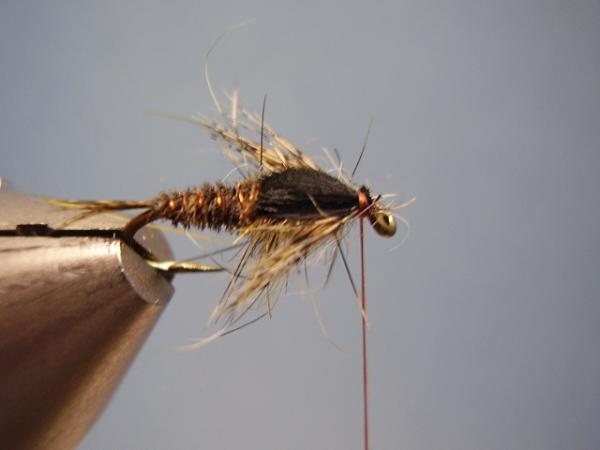
Now clip the excess close without fear of clipping your thread!
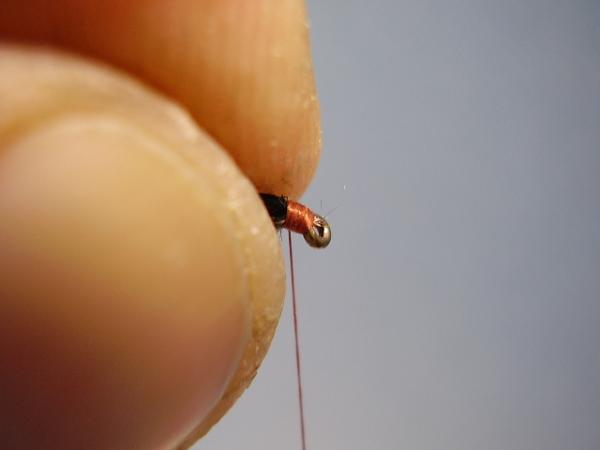
Pull back the "scruff" and build a neat head. Whip-finish, clip, and cement.
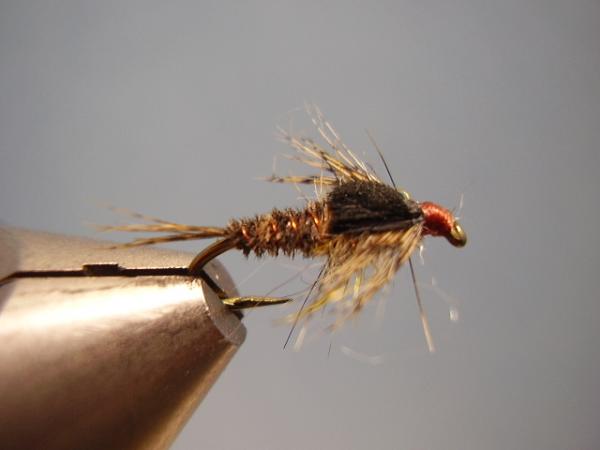
A completed LW's Dark Quill Sulphur Nymph.